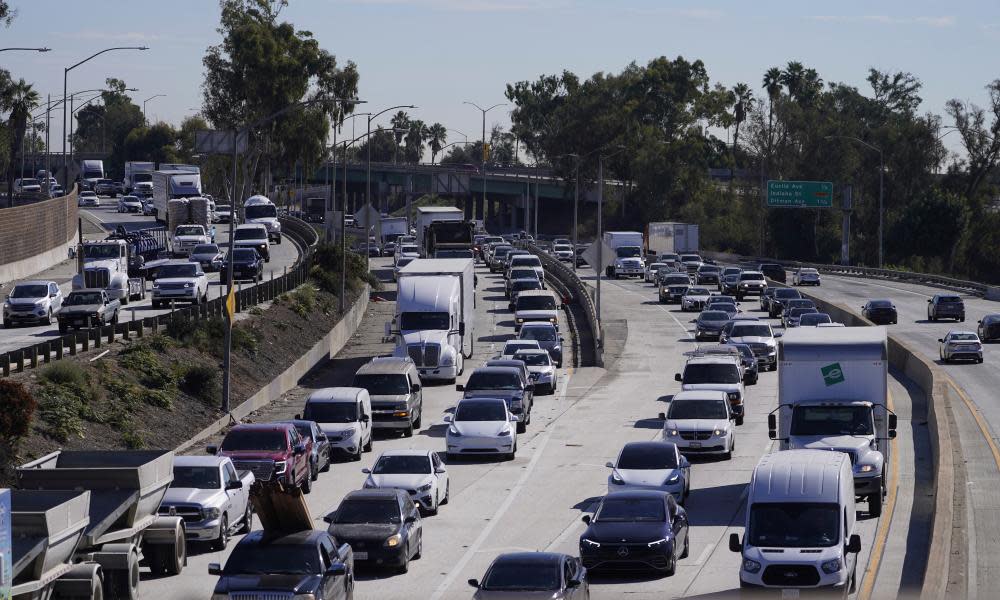Like a high-sodium diet: traffic pollution can cause rise in blood pressure – study

Getting stuck in traffic is one of the most common stressors that millions of Americans face every day. The bumper-to-bumper traffic can come at the cost of wasted gas, environmental pollution, and as new research shows, even spikes in blood pressure.
Air pollution from traffic can cause a significant rise in blood pressure that can last up to 24 hours, according to a study via the University of Washington. The spike is comparable to the effect of a high-sodium diet and can contribute to cardiovascular problems. Long-term exposure to vehicle exhaust has been widely linked with respiratory problems such as asthma, especially in children.
Related: ‘Just have to wake up earlier’: Los Angeles residents blase about traffic after highway fire
“Traffic air pollution increases blood pressure within an hour of being in traffic and it stays elevated a day later,” said author of the study Joel Kaufman, a physician and professor of environmental and occupational health sciences at the University of Washington.
Sixteen healthy people between the ages of 22 and 45 underwent three separate drives as passengers through Seattle rush hour. Two of those drives were “unfiltered”, meaning the road air was allowed to enter the car, as is the case for many drivers on the road today. On the third drive, a Hepa (high efficiency particulate absorbing) filter was installed in the car, with participants unaware which drive had filtration. The researchers measured the blood pressure of the passengers before, during and after the two-hour drive.
Breathing unfiltered air resulted in blood pressure increase of more than 4.5mm Hg (millimeters of mercury) compared to filtered air. Most of the pollution came from tailpipe exhaust or the fossil fuel combustion, as well as brake and tire wear. The filters were most effective in reducing ultrafine particles (86% decrease), black carbon, which is mostly from diesel (86%), and PM2.5 (60%) while gasses like carbon dioxide and nitrogen oxide were unaffected.
“The clue here is that these tiniest particles are probably what’s responsible for blood pressure difference,” Kaufman said.
In the US, people of color are more likely to live in close proximity to highways. The Federal Highway Act of 1956 spurred construction of 41,000 miles (66,000km) of the interstate system that bulldozed communities of color, split neighborhoods, and devalued property – all while perpetuating air pollution.
“Historical practices of disinvestment have resulted in pretty strong racial disparities in traffic-related air pollution in the US,” said Sara Adar, associate professor of epidemiology at the University of Michigan School of Public Health, who was not involved in the study. “Neighborhoods that were redlined were more commonly disrupted by highway developments than white neighborhoods.”
Improving traffic and reducing driving with fossil fuel vehicles are among the societal solutions that Kaufman sees as effective. On an individual level, avoiding these exposures by spending less time in traffic is the best possible action. If that’s not possible, closing windows, getting a car filter, and putting air on the recirculation setting can also help. If you can’t control the ventilation system – for instance in public transport – wearing an effective respirator mask can offer protection.
“If you live in an area that has heavy traffic-related air pollution, you want to keep your windows closed and have air filtration capability in your home,” Kaufman said.

 Yahoo News
Yahoo News 
